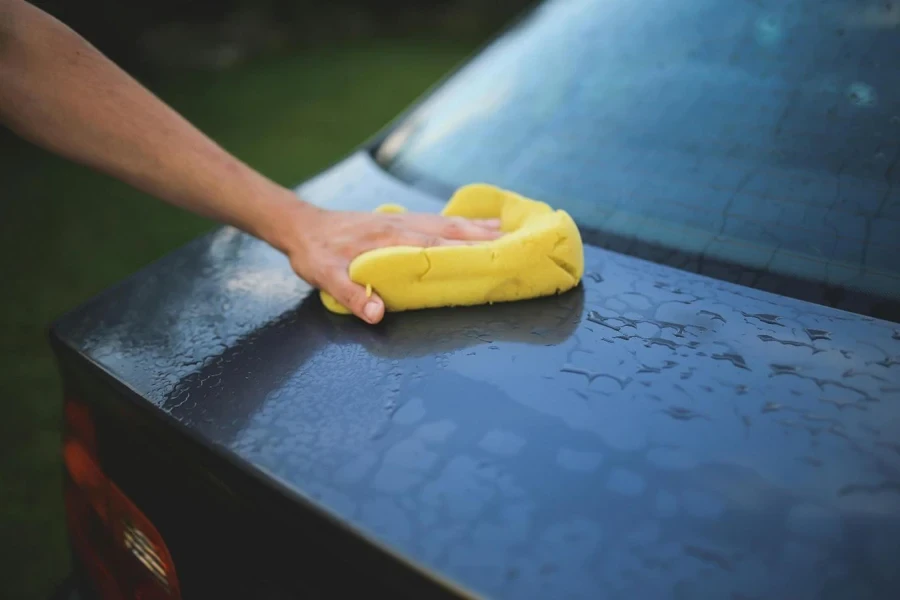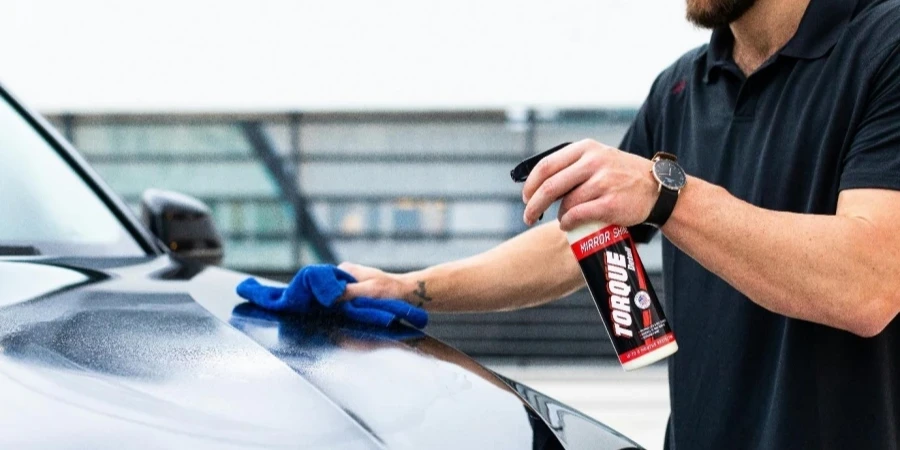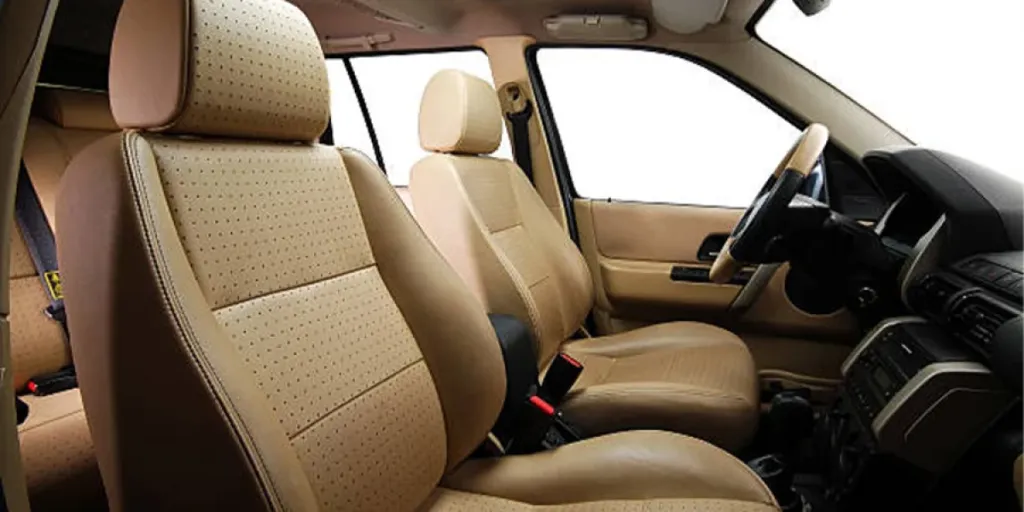Cloth materials play a pivotal role in automotive applications, delivering both functionality and enhanced aesthetics. From high-performance textiles in safety features like airbags to specialized cleaning cloths ensuring a pristine finish, these products are indispensable. The versatility of materials such as microfiber, terry, and chamois offers solutions tailored to cleaning, maintenance, and interior detailing. Advancements in fabric technology have further elevated durability and eco-friendliness, meeting the growing demands of the industry. Selecting the right cloth ensures optimal performance, safeguarding vehicle appearance and longevity in competitive automotive markets.
Table of Contents
Understanding the market dynamics of automotive textiles
Growing market size and future projections
Key factors driving growth
Regional dominance and emerging trends
Exploring cloth types: Features that matter
-Microfiber cloths: The ultimate multitasker
-Terry cloths: Absorbency with durability
-Chamois cloths: Streak-free drying power
-Waffle weave and suede cloths: For detailed finishes
How to choose the right cloth for your car
1. Matching GSM to your needs
2. Decoding pile types and applications
3. Maintenance tips for long-lasting performance
Conclusion
Understanding the market dynamics of automotive textiles

Growing market size and future projections
The global automotive textiles market is witnessing significant growth, driven by rising demand for durable and sustainable materials. Market size reached $32.89 billion in 2024 and is projected to grow to $52.09 billion by 2037, expanding at a compound annual growth rate (CAGR) of 3.6%. This steady rise reflects the increasing adoption of textiles for vehicle interiors, safety applications, and eco-conscious innovations.
Key factors driving growth
The market is fueled by the adoption of eco-friendly materials, stricter vehicle safety regulations, and evolving consumer preferences for comfort and durability. Innovations like organic textiles and high-performance composites are reshaping the industry. According to Statista, safety applications such as airbags and seat belts dominate usage, reflecting heightened awareness around vehicle occupant safety.
Regional dominance and emerging trends
Asia-Pacific leads the global market, accounting for 48% of revenue share by 2037, largely due to rapid urbanization, economic growth, and high automobile production in countries like China, India, and Japan. The region’s dominance is further bolstered by its robust manufacturing capabilities and technological advancements in textile production. Meanwhile, North America and Europe are focusing on sustainable and high-performance materials, aligning with their environmental objectives.
Exploring cloth types: Features that matter

-Microfiber cloths: The ultimate multitasker
Microfiber cloths are composed of ultrafine synthetic fibers, typically measuring 1/100th the diameter of human hair, allowing them to clean microscopic particles effectively. These fibers are a blend of polyester for strength and polyamide for absorbency, with common ratios being 80:20 or 75:25. The GSM (grams per square meter) of the cloth affects its utility, with lower GSM (300-400) suited for light dusting, medium GSM (400-500) ideal for wiping glass surfaces, and higher GSM (500-800) used for heavy-duty drying or waterless car washing. Microfiber’s intricate structure, characterized by star-shaped cross-sections, provides excellent dirt and liquid trapping ability. Dual-pile cloths combine short and long fibers, offering a versatile solution for polishing and deep cleaning in one tool.
-Terry cloths: Absorbency with durability
Terry cloths are made from woven cotton loops that increase the fabric’s surface area, resulting in superior water absorption. Each square inch of terry cloth can feature hundreds of loops, making it effective for trapping grime and moisture. Their thickness and weight, measured in GSM, typically range from 200 to 600, with heavier options preferred for tasks requiring maximum absorbency. Despite their durability, the rough texture of terry cloths can pose a risk of scratching sensitive car surfaces if used improperly, which is why they are commonly reserved for tasks like cleaning wheels or applying tire shine.
-Chamois cloths: Streak-free drying power

Chamois cloths, made from either natural sheepskin or synthetic materials, excel at drying vehicles due to their unique ability to absorb large volumes of water while leaving surfaces streak-free. The fibers in chamois cloths have a natural capillary action, pulling water away from surfaces without requiring excess pressure. A typical chamois cloth can hold up to five times its weight in water, making it efficient for large surface areas. Proper care, such as soaking before use and air drying, preserves its elasticity and prevents cracking, ensuring long-term usability.
-Waffle weave and suede cloths: For detailed finishes
Waffle weave cloths feature a three-dimensional honeycomb pattern that increases surface tension, allowing them to lift dirt and absorb water efficiently without spreading residues. This structure provides higher absorbency compared to standard microfiber towels, making them suitable for drying glass and painted surfaces. Suede cloths, often constructed from ultrafine synthetic microfiber, have a smooth, low-friction surface designed for delicate tasks like cleaning infotainment screens and dashboards. They excel at lifting fine dust and fingerprints while avoiding static buildup, which helps to keep surfaces cleaner for longer.
How to choose the right cloth for your car

1. Matching GSM to your needs
The GSM (grams per square meter) of a cloth significantly determines its application and effectiveness. Low GSM cloths, ranging from 300 to 400 GSM, are best suited for tasks like light dusting or buffing dashboards due to their lightweight and low absorbency. Medium GSM cloths, typically 400 to 500 GSM, provide a balance of absorbency and softness, making them ideal for general cleaning and wiping glass surfaces without leaving streaks. High GSM cloths, falling within the 500 to 800 range, excel in heavy-duty applications such as drying vehicles or waterless car washes, offering superior water absorption and protection against surface scratching. Selecting the appropriate GSM ensures the cloth performs optimally for the specific cleaning task at hand.
2. Decoding pile types and applications
The pile type of a cloth, or the fiber length, plays a critical role in its cleaning capabilities. Short pile cloths are characterized by tightly woven fibers that excel at polishing and creating a swirl-free finish on painted surfaces. Long pile cloths, with their extended fiber loops, are designed for trapping dirt and debris, making them suitable for deep cleaning tasks. Dual-pile cloths combine the advantages of short and long fibers, offering versatility for multipurpose cleaning—one side can be used for polishing, while the other tackles dust and dirt. Choosing the correct pile type not only improves cleaning efficiency but also minimizes the risk of damaging delicate surfaces.
3. Maintenance tips for long-lasting performance
Proper care and maintenance are essential to preserve the performance and durability of cleaning cloths. Washing cloths separately with warm water and a gentle detergent prevents contamination and maintains fiber integrity. Avoid using fabric softeners or bleach, as these chemicals can clog or degrade the fibers, reducing their effectiveness. High-heat drying should also be avoided, as it can warp synthetic materials like microfiber. Instead, air drying or using a low-heat setting is recommended. Storing cloths in a dust-free environment ensures they remain clean and ready for use, maintaining their effectiveness for longer durations. Regular and careful maintenance maximizes the lifespan and performance of these essential automotive care tools.
Conclusion

Cloth materials are indispensable in automotive care, serving a range of applications from cleaning and detailing to enhancing interior aesthetics and safety. Their technical variations, such as GSM ratings, fiber compositions, and pile types, cater to specific needs, ensuring optimal performance for tasks like drying, polishing, and deep cleaning. Making informed choices based on task requirements and proper maintenance practices ensures long-lasting efficiency and protects delicate vehicle surfaces.




